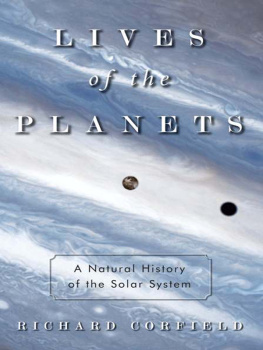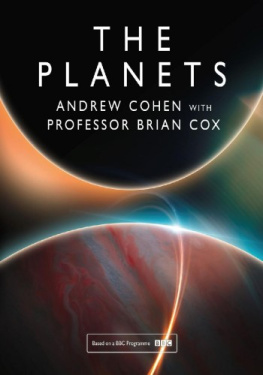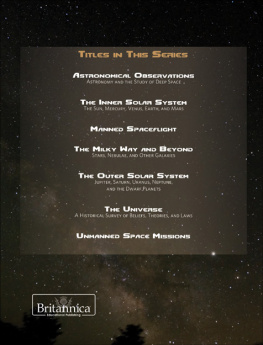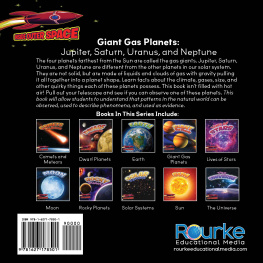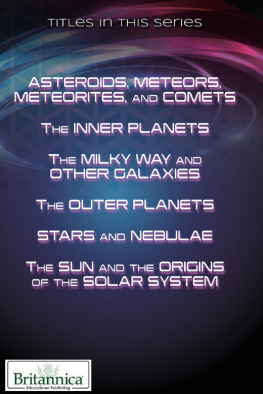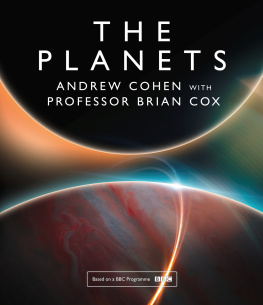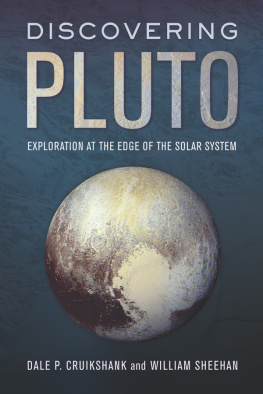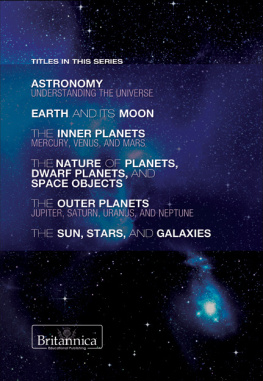Planets are like organisms in that they have irreducible individuality and must therefore be explained by methods of historical analysis: they are not like molecules in a chemical equation.
Watching the delicate artistry with which spacecraft are fashioned, trembling at the drama of their launches, admiring the exquisite curves of their trajectories, listening to their strange voices speaking from millions of miles away, stretching the imagination to envisage the new concepts of space, you realise that this is... an unheard-of poetry of tremendous dimensions. And who questions the cost of a poem?
PREFACE
Just off Muswell Hill Broadway, in North London, is a narrow alley. The open stalls that once backed onto this rather ordinary North London street are now long gone, converted into apartments in an area much sought after by young professionals intent on pursuing village life while remaining within safe distance of a Starbucks. A few hundred feet to the northeast is Muswell Hill roundabout and, just down the hill, Alexandra Palace, the Victorian pile from which the BBC started broadcasting television in the days between the two World Wars.
But for me, this area has another, completely private claim on memory, for it was here in the early 1970s that I asked the local carpenter to build me a spacecraft.
The air was thick with the resinous scent of pine, and the youthful owner, clearly engrossed with the business of his trade, looked workmanlike in his brown leather apron. Yet he did not blink when I, with my father standing by, asked him to build me the nose cone assembly of a Saturn V. To an eight-year-old, it seemed the most reasonable request in the world; after all, how hard could it be? NASA was doing it all the time.
He listened gravely as I told him that all I required was the nose cone, because I had already made arrangements for the rockets fuselage. Indeed, the old wooden coat rack I had salvaged was even at that moment waiting on the launching pad in our backyard. The carpenter did not laugh. Instead, he explained courteously that, although constructing the nose cone of a 364-foot-tall rocket that produced over 7 million pounds of thrust and was currently costing the American economy $3 billion a year was beyond his immediate art, he thought my answer might be to get hold of an old wooden barrelsay, an old beer barreland modify that.
Thanking him, my father and I (somewhat hurt) moved on.
For months afterward, the Americans battle for the moon occupied my every waking moment. I remember, as though it were yesterday, the treat of staying up late on the night of July 20, 1969. The famous grainy images transmitted from the Sea of Tranquility were not helped by the technologyan old Bakelite television set in my grandfathers bedroomavailable to the household of an impoverished Scottish minister in the late 1960s, but it sufficed.
At that moment02:56:15 Universal Time (GMT), July 21, 1969I was there, standing beside them, as Neil Armstrong and Buzz Aldrin made first contact with the surface of a celestial body that was not the planet on which we evolved. To this day, that memory still raises the hair on my arms. Our generation was there.
Forget Woodstock, forget the Berlin Wall, forget the Vietnam War. In a thousand years, the 1960s will be remembered for one thing only: the moment when 3.8 billion years of evolution on an unremarkable, watery world orbiting an unremarkable star in an unremarkable galaxy produced animals capable of traveling to other worlds. What is the statistical probability of being part of that one generation out of all the countless trillions since the first self-copying molecules aggregated on a layer of clay almost 4 billion years ago? Slim, I think you will agree.
As early as the late 1950s, unmanned missions were rocketing into space. Purely for the purposes of science, the Americans had planned to put a satellite into orbit as part of their contribution to the 1958 International Geophysical Year. Orderly progress, however, was derailed when, on October 4, 1957, the Soviets lofted Sputnik 1, a 59cm aluminum sphere, into orbit. The Soviet craftlittle more than a ball with a breadboarded radio beacon on boardcaused mass hysteria in the United States because of the so-called missile gap. The prevailing belief was that the Soviets would soon be dropping nuclear bombs on America like rocks from a highway overpass (as Lyndon Johnson famously put it) and that the American scientific and industrial establishment had very seriously screwed the pooch (as Chuck Right Stuff Yeager might say).
Explorer 1 became Americas first orbiting satellite after its successful launch on January 31, 1958. It returned instant results, catapulting the astronomer James Van Allen into the limelight with his discovery of the radiation belts that now bear his name. Space quickly became a political game, however, and the unmanned probes were relegated to insignificance for the next decade and a half as the Apollo program and the race for the moon dominated the public imagination. Space probes continued to be built, though, developing in sophistication as their designers strove to comprehend the scientific requirements of space exploration. It was a time of innovation and imagination, for the engineers and fabricators designing these unsung spacecraft had little idea of what they were trying to measure. What was important out there? Magnetism, surface chemistry, atmospheric composition, solar wind? All these properties, and more, would be addressed by the backroom boys of the space age, today allowing us to send unmanned robots equipped with picks, grinders, and lenses to the surface of Mars to carry out geology experiments, exactly as their human equivalents did nearly forty years ago on the lunar surface.

